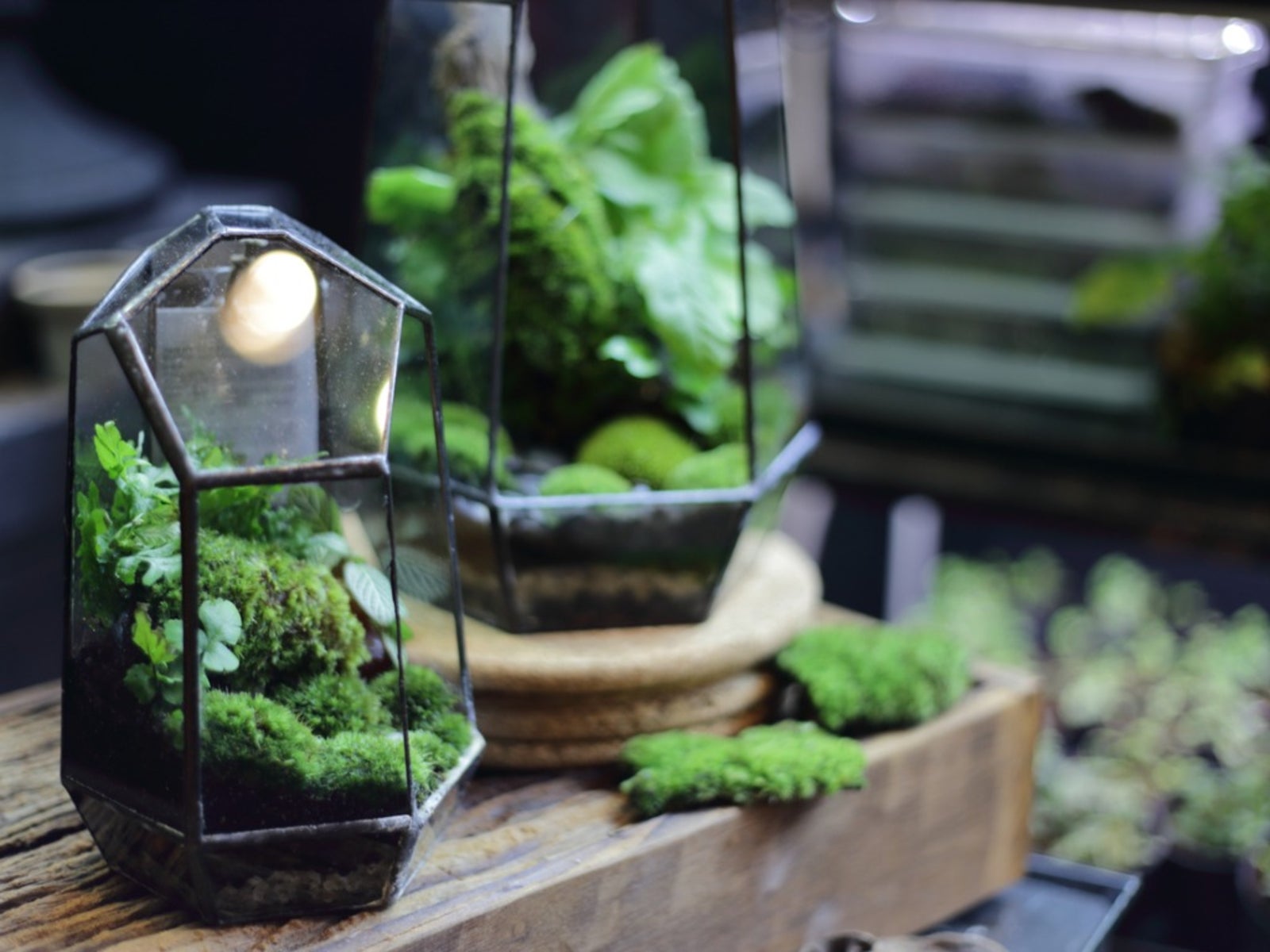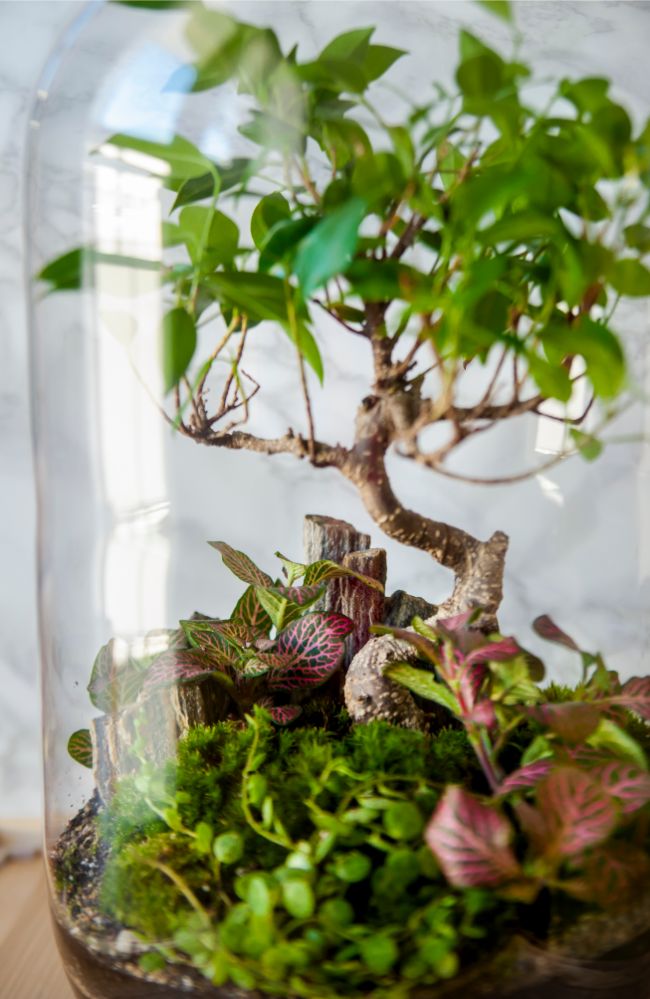The Ultimate Guide on How to Care for a Terrarium Building, Planting, and Maintenance Tips
Danny PhamShare
How to Care for a Terrarium? What steps do I take to keep Miniature Ecosystem Flourishing?
Terrariums have become increasingly popular in recent years, captivating the hearts and minds of plant enthusiasts, nature lovers, and those seeking to create a miniature oasis within their homes. These self-contained, closed-loop ecosystems offer a fascinating glimpse into the delicate balance of life, allowing us to cultivate and nurture a thriving, self-sustaining environment on a small scale. Whether you're a seasoned gardener or a budding plant enthusiast, learning how to care for a terrarium can be an immensely rewarding and enriching experience.
Understanding Terrariums
:max_bytes(150000):strip_icc()/GettyImages-726896707-5a7236d6ae9ab80037ea0bfa.jpg) Terrarium jar
Terrarium jar
At their core, terrariums are essentially tiny, enclosed gardens that mimic the natural environment of the plants they contain. These miniature ecosystems are designed to be self-sustaining, with the plants, soil, and even the water cycling through a closed loop. The closed container helps to retain moisture, creating a humid environment that is ideal for many types of plants.
Terrariums can be created using a variety of containers, from simple glass jars to elaborate, custom-made enclosures. The key to a successful terrarium lies in striking the right balance between the different components – the plants, soil, and environmental factors – to create a thriving, self-sustaining system.
Creating a Miniature Ecosystem

The magic of a terrarium lies in its ability to replicate the natural processes that occur in larger ecosystems. As a closed system, the terrarium relies on the interplay of various elements to maintain a delicate balance.
The Water Cycle
Within a terrarium, the water cycle is a crucial component. The water evaporates from the soil and plants, condenses on the container walls, and then drips back down, nourishing the plants once again. This continuous cycle ensures that the terrarium remains hydrated without the need for frequent watering.
Nutrient Cycling
Just as in a larger ecosystem, the terrarium relies on the recycling of nutrients. As the plants grow, they absorb nutrients from the soil and release them back into the system as they decompose. This cycle ensures that the soil remains fertile, providing the necessary nutrients for the plants to thrive.
Gas Exchange
The closed environment of a terrarium also facilitates gas exchange. The plants take in carbon dioxide and release oxygen, while microorganisms in the soil convert organic matter into carbon dioxide, which is then absorbed by the plants. This symbiotic relationship helps to maintain a balanced atmosphere within the terrarium.
How to build a Terrarium
Getting Started
To begin building your terrarium, you'll need a few essential supplies: a suitable container, potting soil, and the plants of your choice. The container can be a glass jar, a clear plastic container, or even a repurposed vessel – the key is that it has a lid or cover to retain the humidity.
When selecting your container, consider the size and shape that will best accommodate the plants you plan to include. Taller, narrower containers work well for upright plants, while wider, shallower containers can showcase a variety of plant types.
See our full Terrarium building guide here
Choosing the Perfect Plants
Selecting the right plants for your terrarium is crucial. Look for species that thrive in humid, low-light environments, as these conditions are typical of a closed terrarium. Some popular choices include:
- Succulents (e.g., echeveria, jade plant)
- Ferns (e.g., maidenhair fern, bird's nest fern)
- Mosses (e.g., sheet moss, cushion moss)
- Tropical plants (e.g., peperomia, air plants)
When choosing your plants, consider their mature size, growth habits, and light requirements to ensure a harmonious and balanced ecosystem.

Best terrarium plants
Planting and Finishing Touches
Begin by adding a layer of gravel or small rocks to the bottom of your container, which will help with drainage and aeration. Next, add a layer of potting soil, taking care to leave enough space at the top for your plants.
Carefully place your selected plants in the soil, arranging them in a visually pleasing manner. Be mindful of the different growth habits, ensuring that taller plants are placed in the back or center, with smaller, trailing plants surrounding them.
Once your plants are in place, you can add any additional decorative elements, such as small figurines, stones, or driftwood, to personalize your terrarium. Finally, lightly mist the plants and soil to provide the initial moisture needed to kickstart the ecosystem.
You Can Also Keep Them in Their Own Containers
While terrariums are often housed in glass containers, you can also create self-contained, low-maintenance plant displays in a variety of other vessels. Small jars, bowls, or even repurposed items like lightbulbs or test tubes can be transformed into unique and visually striking terrariums.
The principles of building and maintaining a terrarium remain the same, regardless of the container. The key is to ensure that the plants you choose are well-suited to the size and conditions of the container, and that the overall ecosystem remains balanced and self-sustaining.
Care of Terrariums

Proper care and maintenance are essential for keeping your terrarium thriving. Here are some key considerations:
Light
Terrariums require bright, indirect light to thrive. Positioning your terrarium near a sunny window or under a grow light can provide the necessary illumination. Avoid exposing your terrarium to direct sunlight, as this can lead to excessive heat buildup and dehydration.
Fertilizer
Terrariums typically don't require frequent fertilization, as the closed system helps to recycle nutrients. However, you can occasionally apply a diluted, water-soluble fertilizer to replenish any nutrients that may become depleted over time.
Watering
One of the primary benefits of a terrarium is its self-watering nature. However, it's still important to monitor the moisture levels and adjust as needed. If you notice condensation building up on the container walls, it's a sign that the terrarium is retaining too much moisture. In such cases, you can remove the lid for a short period to allow some of the excess moisture to evaporate.
Conversely, if the soil appears dry or the plants are wilting, you can lightly mist the plants and soil to replenish the moisture. Avoid overwatering, as this can lead to issues like fungal growth or root rot.
Managing Excessive Growth
Over time, your terrarium plants may start to grow and spread out, potentially crowding the available space. When this happens, you can carefully prune or trim the plants to maintain the desired look and balance. Be mindful not to remove too much foliage, as this can disrupt the ecosystem.
Scrub the Container
Periodically, you may need to clean the interior of the terrarium container. Over time, mineral buildup or algae growth can occur on the glass, obscuring the view of your miniature garden. Use a soft cloth or a cotton swab dipped in vinegar or a mild cleaning solution to gently scrub the inside of the container, taking care not to disturb the plants or soil.
Plants for Terrariums
When selecting plants for your terrarium, it's important to choose species that will thrive in the closed, humid environment. Here are some popular choices for different plant categories:
Upright / Tall Plants
- Dracaena 'Marginata'
- Ficus 'Ginseng'
- Peperomia prostrata
- Tradescantia 'Zebrina'
Mid-size Plants
- Fittonia 'Nerve Plant'
- Gynura 'Purple Passion'
- Hoya 'Wax Plant'
- Philodendron 'Micans'
Low / Trailing Plants
- Begonia 'Trailing Begonia'
- Hypoestes 'Polka Dot Plant'
- Pilea 'Chinese Money Plant'
- Sedum 'Stonecrop'
When creating your terrarium, consider the different growth habits and light requirements of these plants to ensure a harmonious and well-balanced ecosystem.
Troubleshooting Common Terrarium Care Issues
/common-terrarium-mistakes-847861-FINAL-5c6c80bc46e0fb0001fc6351.jpg)
Most common problems in maintaining a terrarium. Source: The Spruce

Even with the best care, terrariums can sometimes encounter challenges. Here are some common issues and how to address them:
| Issue | Possible Causes | Solutions |
|---|---|---|
| Condensation buildup | Excessive moisture |
- Remove the lid or cover for a short period to allow excess moisture to evaporate - Ensure adequate air circulation within the terrarium |
| Mold or fungal growth | Overwatering, poor air circulation |
- Reduce watering frequency - Increase air circulation by opening the lid or using a small fan - Remove any affected plant material |
| Plant wilting or browning | Underwatering, excessive heat or light |
- Mist the plants and soil lightly - Relocate the terrarium to a cooler, more shaded spot - Check for any dead or dying plant material and remove it |
| Algae growth | Excess moisture, excessive light |
- Wipe down the container walls to remove algae buildup - Reduce the amount of light the terrarium receives |
| Soil compaction | Overwatering, lack of aeration |
- Carefully remove the top layer of soil and replace it with fresh, well-draining potting mix - Consider adding a layer of gravel or pebbles to improve drainage and aeration |
By understanding the common issues and being proactive in monitoring your terrarium, you can quickly identify and address any problems that may arise, ensuring your miniature ecosystem continues to thrive.
Conclusion
Caring for a terrarium is a captivating and rewarding experience that allows you to create a self-sustaining, miniature ecosystem in your own home. By understanding the principles of terrariums, carefully selecting the right plants, and providing the necessary care and maintenance, you can cultivate a thriving, low-maintenance oasis that brings the beauty and tranquility of nature into your living space.
Whether you're a seasoned plant enthusiast or a beginner exploring the world of terrariums, the journey of building and caring for your own miniature ecosystem is one filled with wonder, discovery, and a deeper appreciation for the delicate balance of life. So, get ready to embark on an adventure in microcosm and enjoy the beauty and serenity of your very own terrarium.
 is here! Shop now, pay later in 4 easy installments
is here! Shop now, pay later in 4 easy installments










